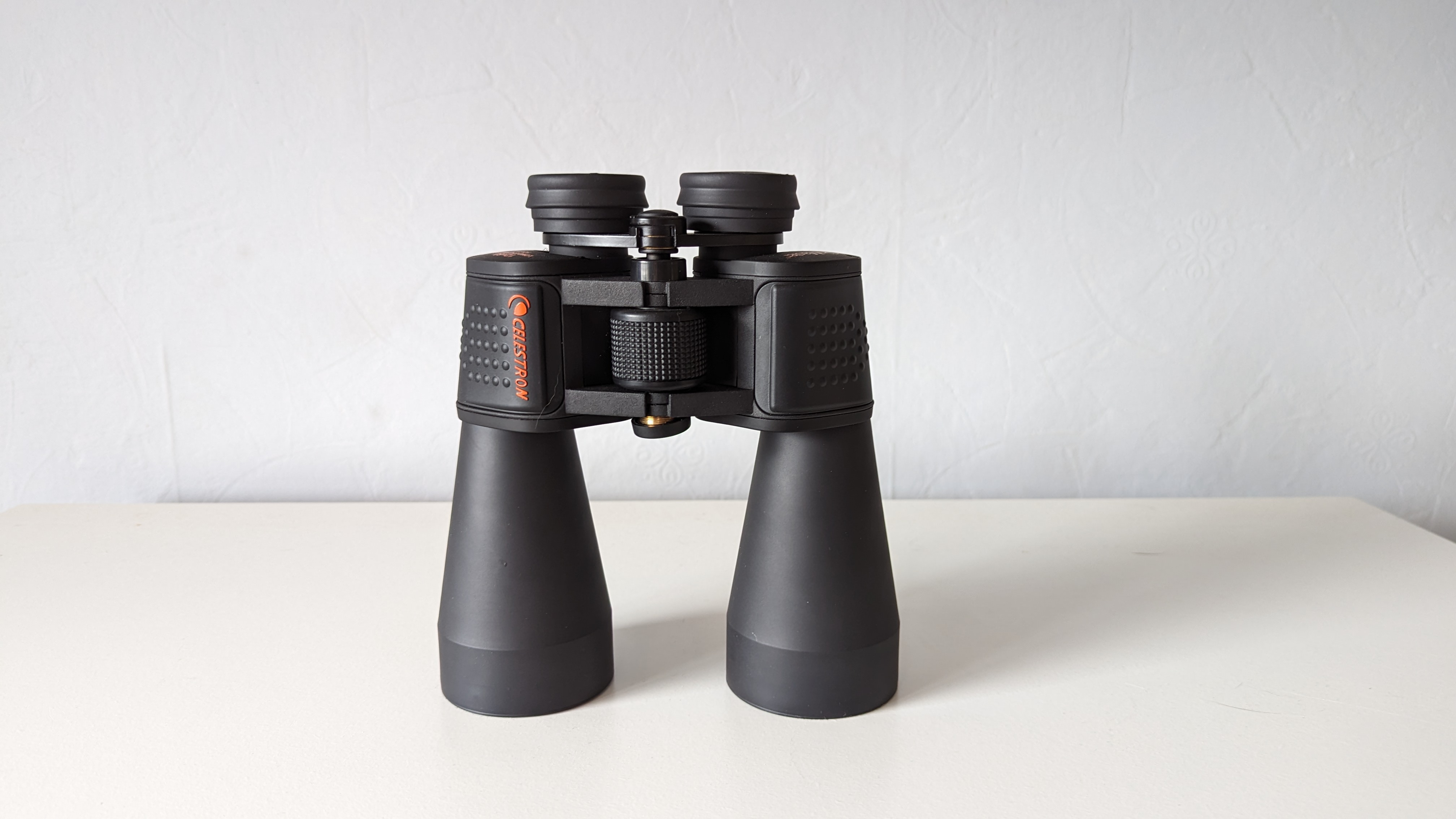
For anyone seeking a pair of binoculars for stargazing but don’t want to drop a ton of money, the Celestron Skymaster 12x60 binoculars are probably your best bet. They provide ample magnification (12x) so that you can zoom in on star clusters and far-away subjects and the 60mm objective lenses, whilst cumbersome, give a great deal more light through-put than more generalist 42mm binoculars.
Design: Porro prism
Magnification: 12x
Objective lens aperture: 60mm
Angular field of view: 5.3 degrees
Eye relief: 17mm
Weight: 39.2 oz (1111 g)
Dimensions: 210mm x 206mm x 72mm (8.25" x 8.1" x 2.8")
They are heavy though, so expect to use a tripod and an appropriate binocular tripod mount to keep things steady while you observe through them. Handholding is possible but you won’t want to be traveling too far with them as they weigh over 1 kg (2.45 lbs) and arms will quickly tire trying to lift up such a big set of binoculars. Designed for adults and to be used on a tripod they will also work for older children and teenagers for observing during the day or at night.
Not sure if these big, bulky low light beasts are your thing? Check out our guide to the best binoculars to discover something more to your taste.
Celestron Skymaster 12x60 binocular: Design
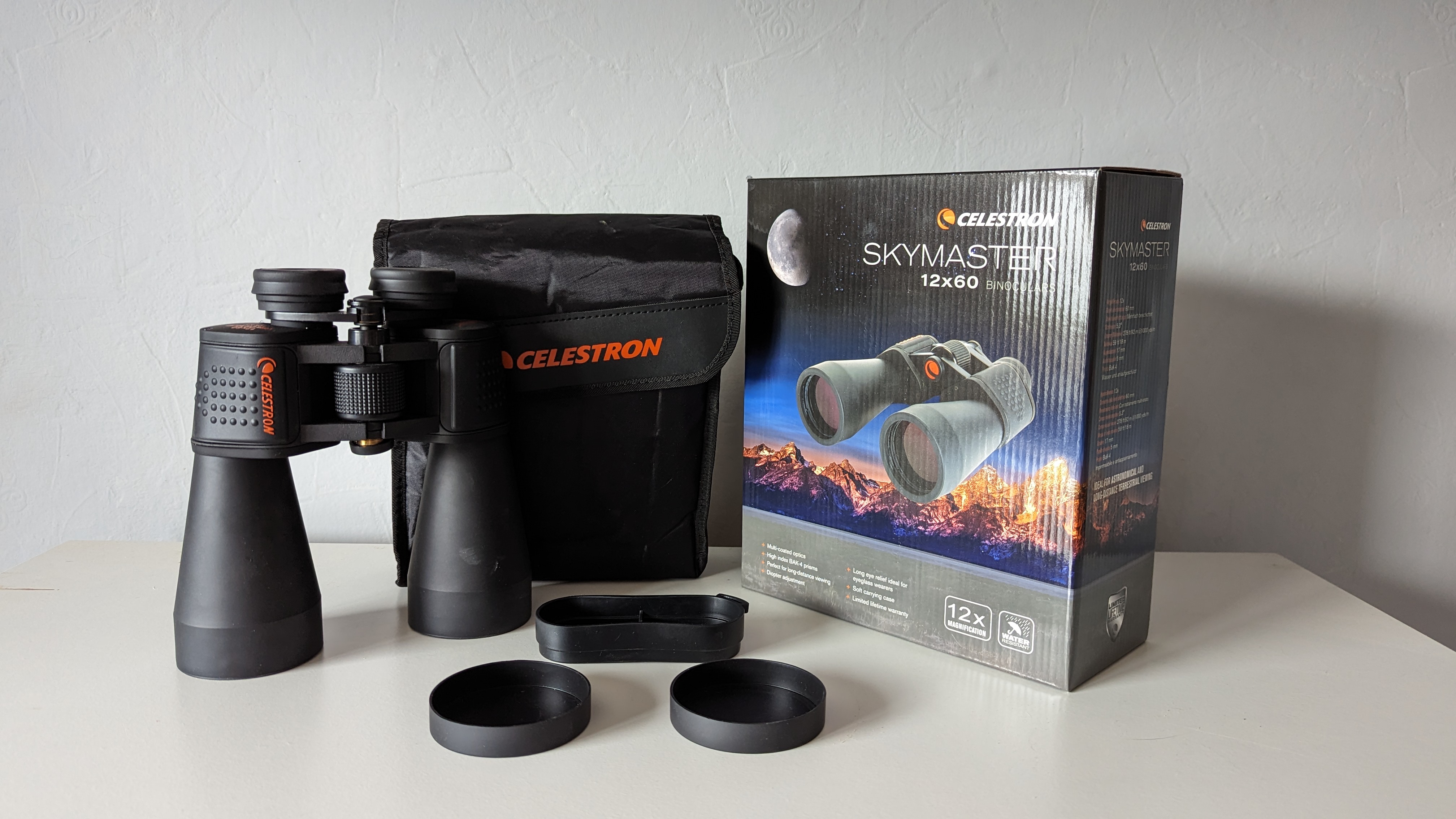
- Porro prism design is chunkier than roof prism
- Ample textured grip for easy holding
- Lens caps occasionally fall off
Encased in black protective rubber armor, the Skymaster 12x60s feel fairly secure in the hand even when using them in inclement weather. A knock or a bump probably wouldn’t shock them too much but oddly you’ll find (as we did, even without a knock) that the lens caps may fall off easily. Our objective lens caps didn’t want to stay on even after a firm press, one little movement or shake and they fell to the floor.
The binoculars are large as we would expect for something of this magnification and with objective lenses at 60mm. There’s no getting around it - Celestron required a larger form factor because of the physics involved with putting that much glass in a pair of binos. The porro prism design also means they’re slightly wider and chunkier than a comparable roof prism binocular (though we don’t yet know of a 12x60 roof prism). But with that comes extra clarity and optical prowess thanks to the BaK-4 prism and multi-coated lenses.
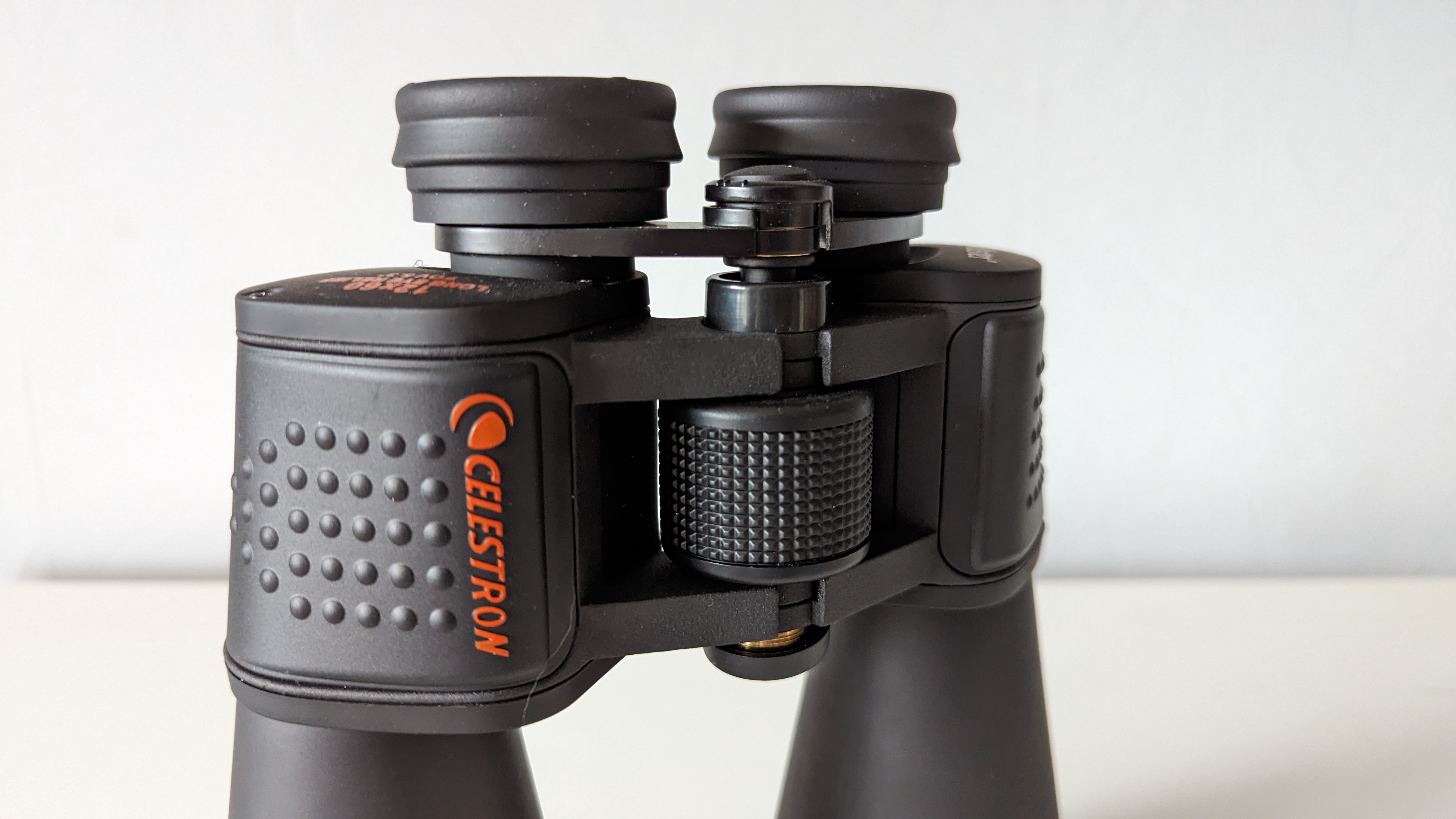
The Skymaster 12x60 has an interpupillary distance from between 56 - 72 mm which is plenty wide enough for almost everyone. But if you have particularly narrow-set eyes, or have smaller children using these binoculars then the minimum distance of 56mm may only just be narrow enough.
We found that we couldn’t quite get them close enough together to feel 100% comfortable and we can’t really see a reason why they don’t, with only a bridge of plastic spanning the two tubes locking together that stops them from coming together slightly more. Again, this won’t be a problem for most people except for the aforementioned.
Celestron Skymaster 12x60 binocular: Performance
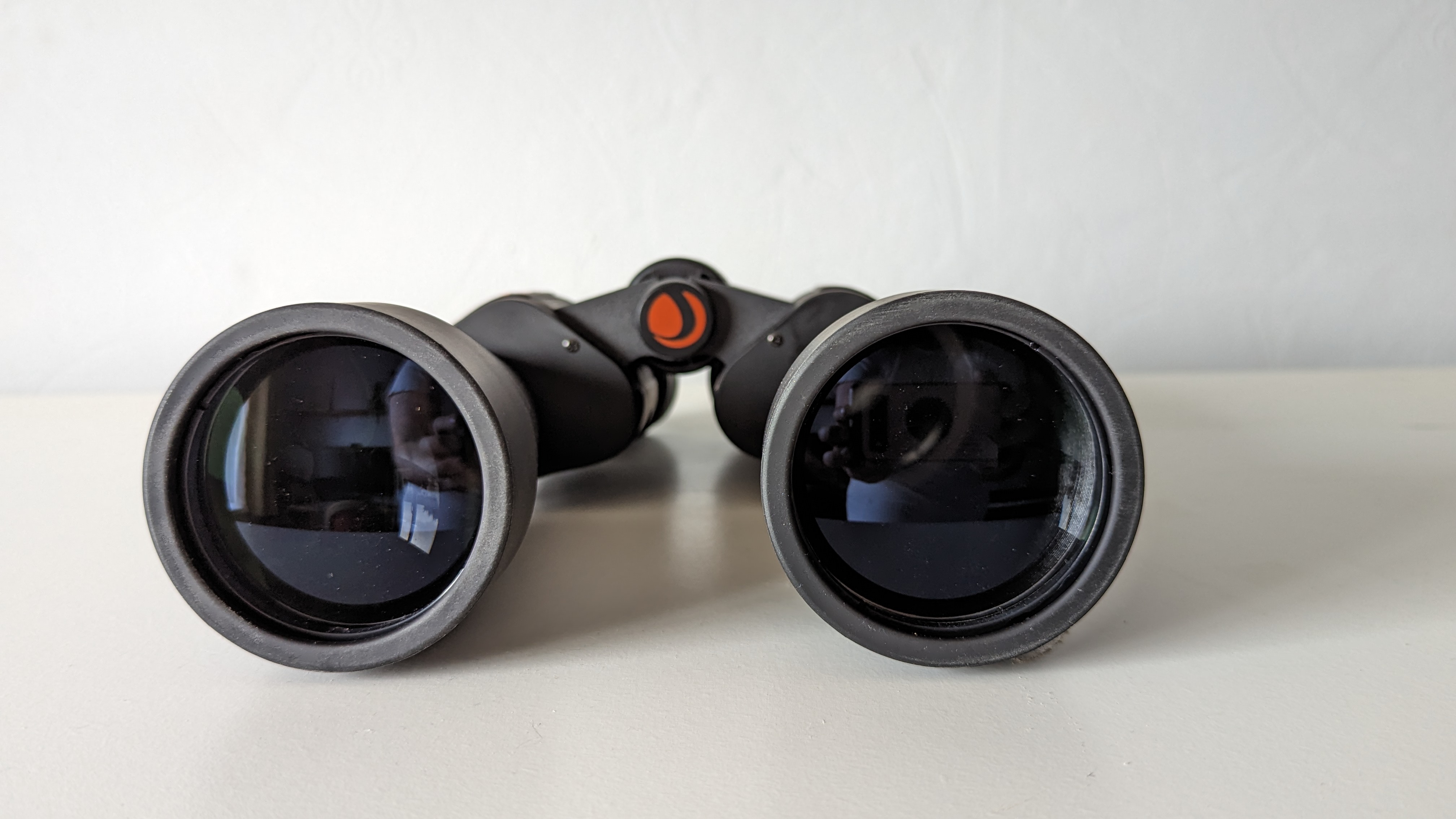
- Nighttime views are excellent
- Sharpness is good in the center
- 12x magnification requires stabilization
We used these mainly for stargazing but also a little wildlife watching and some aviation. Views all-round were impressive. Sharpness throughout the center of the imaging circle was impressive and only a little softness and coma was noticed towards the edges when observing the night sky. We could get in close enough to make out three of Jupiter’s moons and taking a closer look at Orion’s sword, though they are not powerful enough to make out the individual parts that make up Orion’s sword and certainly can’t see M42 well enough.
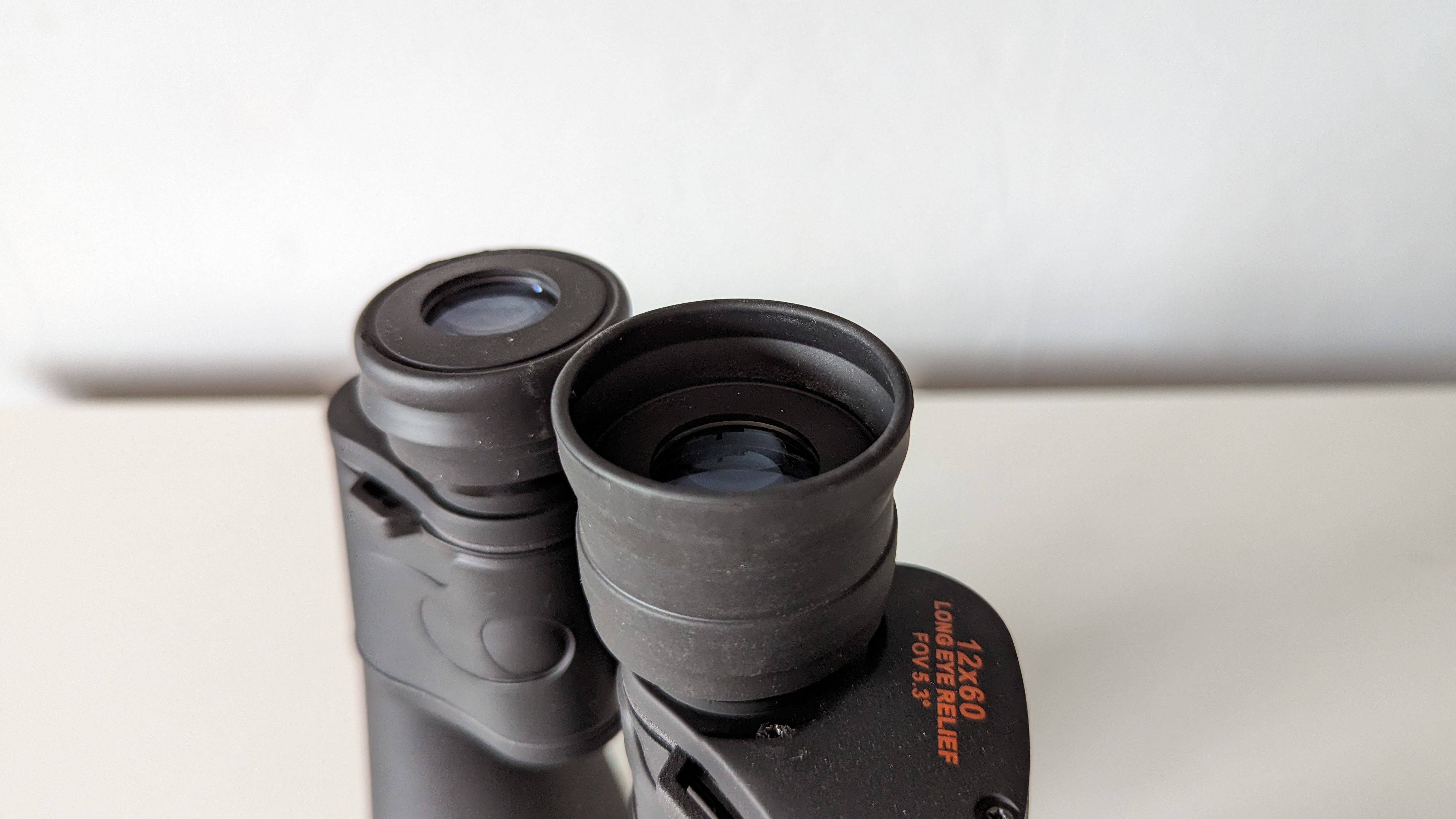
During the day these are good for wildlife watching and are helpful in bird hides to see far-away subjects, especially waterfowl because their graceful, slow paddles make them easy to track. We found it more difficult to track flying birds, especially those that have erratic flying patterns, because of the higher 12x magnification.
Hand-holding the SkyMasters is a bit of a challenge because of their weight and size, especially for longer periods. Personally, we’d recommend using a tripod and a binocular tripod adapter to steady things. However, if you are going to handhold them the trick is to find the center of balance which happens to be at the end of the textured grip, right as they join the sloping binocular tubes. Holding them at the grip as visuals would suggest would actually result in excessive strain on the wrists if using for long periods.
Celestron Skymaster 12x60 binocular: Functionality
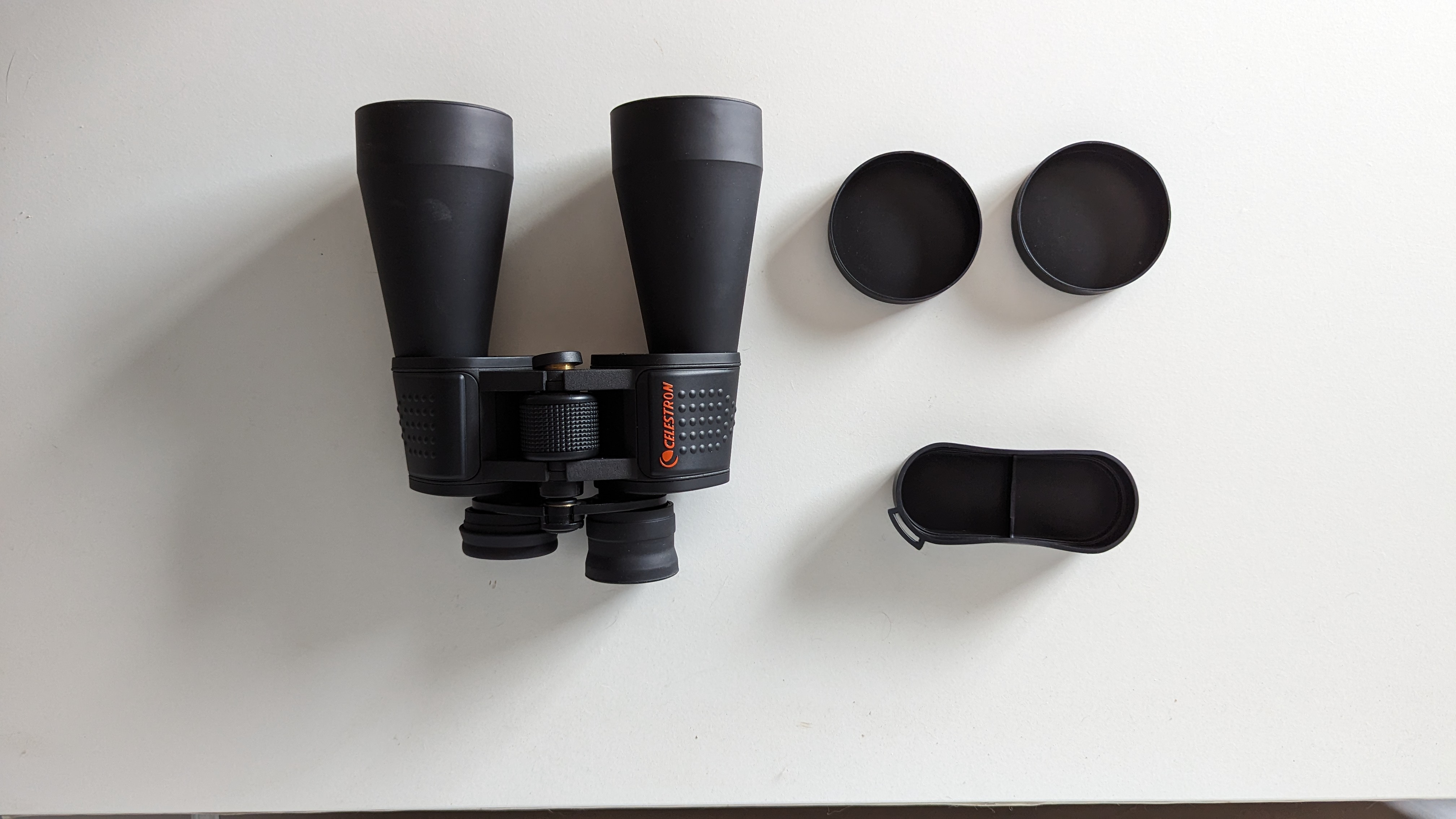
- Eyecups can be adjusted for spectacles wearers
- Smooth operation of hinge and focusing wheel
- Tripod mount is easily accessible
For the money, it’s hard to dislike anything about the Celestron Skymaster 12x60 binoculars. While large and heavy, they are effortlessly easy to use. A smooth hinge that provides just enough friction to hold steady during observation doesn’t feel too heavy. The focusing wheel is similarly smooth and fast enough to pull focus to subjects, whether they be stars, birds, or planes.
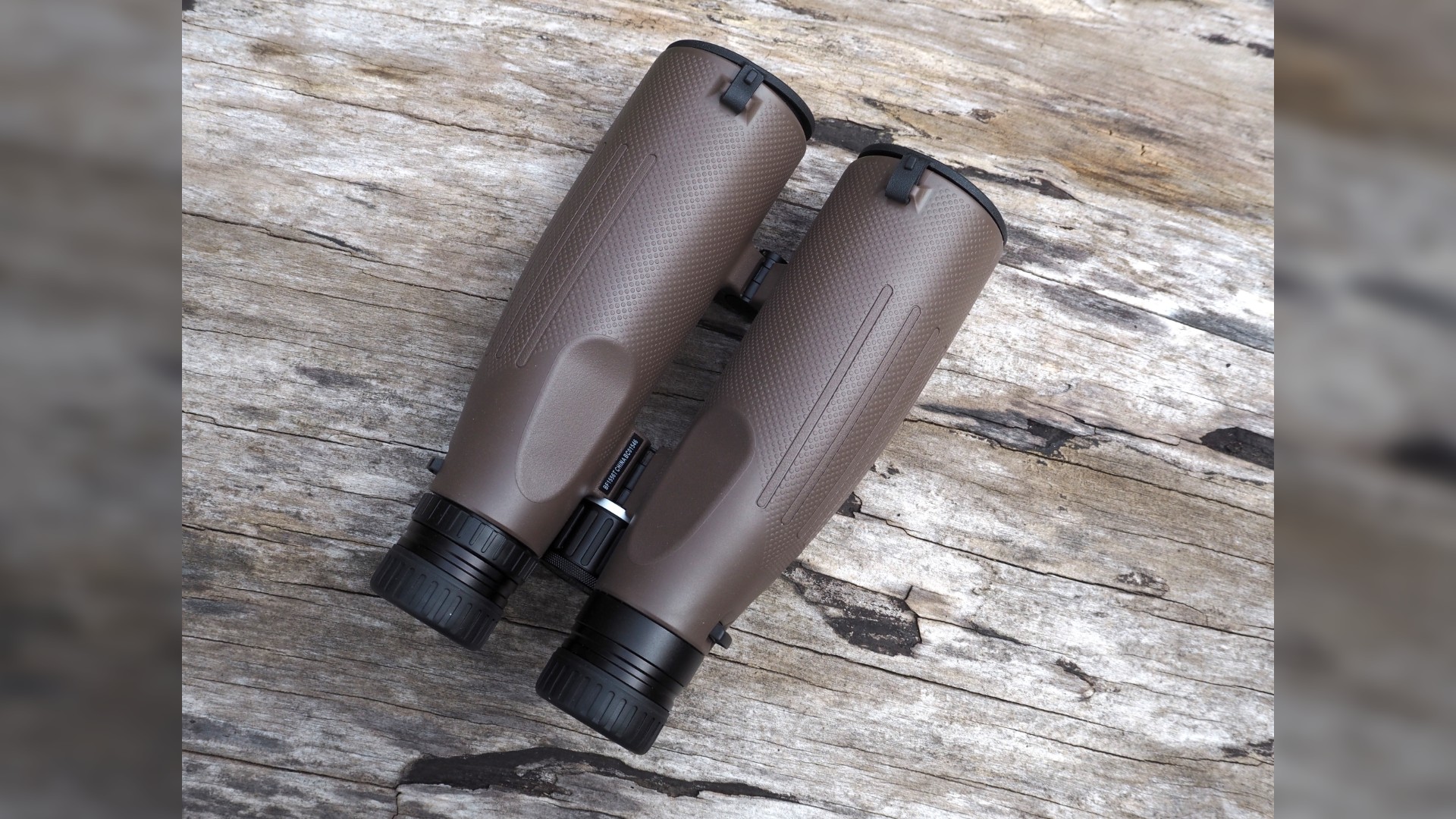
Want to kick things up a notch? Try the Bushnell Forge 15x56 binoculars which we reviewed in 2022. Fantastic optics and great performance mean they sit at number one in our best binoculars guide, though they're much more expensive than the Skymasters reviewed here.
An area we’d like to see improvement would be in the adjustable eyecups. They are adjustable for eyeglasses wearers up to 17mm but are of the flip-down variety and we’d love to see these follow suit with some of Celestron’s other binoculars and have twist-down eyecups so that those who require it can fine-tune their placement during use. However, we’re splitting hairs here as they are much cheaper than many other binoculars and have good performance where it counts.
Functionally, they're quite cumbersome and tricky to travel with unless you have a backpack. Carrying them around your neck for long periods would also be a little inconvenient. But you know what you're getting in for with these Skymaster binoculars, provided you've read the dimensions and weight in our specs box (or have handled them in real life).
Should I buy the Celestron Skymaster 12x60 binocular?
Whether you want to view far-away wildlife or aviation shows even down into low light and twilight or you need a pair of binoculars for some decent stargazing the Celestron Skymaster 12x60s are a great option.
Budget-friendly and simple to use, the worst part about this pair is the lens caps, which isn’t bad all things considered. If you want to really get into the night sky closer and with greater precision though, you may need to look elsewhere as there are limitations on the magnification and objective lens sizes which may become apparent when used in conjunction with one of the best telescopes.
If this product isn't for you
These mammoth binoculars are likely too big and heavy for many generalist observers. For those we’d recommend the recently reviewed Celestron Nature DX 12x56 because of their broader appeal given that they are of roof prism design and therefore more slender and lightweight.
For those where money is no object and ultimate optical performance is required then look no further than the Nikon Monarch HG 10x42. While more wide-field than the Skymasters reviewed here, they reproduce astounding views faithfully with excellent color and contrast and edge-to-edge sharpness. Almost no color fringing can be seen on this pair but you’re going to be dropping nearly four figures on them, so bear that in mind.







